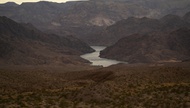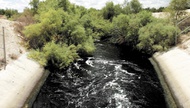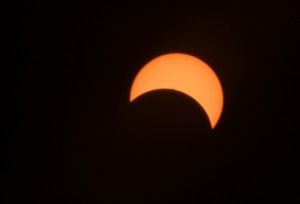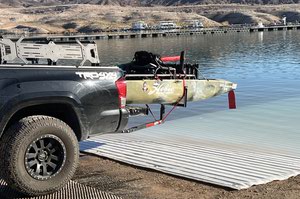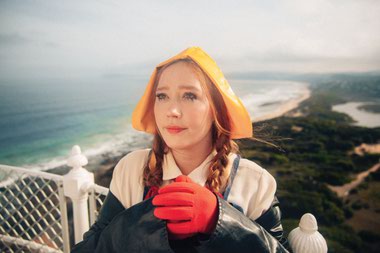Lake Mead is the fifth most-visited national park in the country. In past years, the national recreation area has welcomed 7.6 million annual visitors for hiking, biking, camping and hunting.
About 20% of the park’s visitors use boat ramps or marinas to partake in motorized boating, according to the National Park Service. That visitation has supported countless businesses in Boulder City, the park’s gateway community, and around the lake, where marinas serve millions of boaters.
But the lake’s low water level—caused by a decades-long drought and exacerbated by climate change along the Colorado River—could mean the end of recreational boating as the community knows it.
Since 2010, the water level has dropped about 100 feet, meaning the shoreline has receded more than 1,000 feet in many areas, “leaving boat ramps and other visitor facilities far from the water,” according to the park service.
Lake Mead Mohave Adventures operates marinas and boat launch ramps at Callville Bay and Temple Bar. Rod Taylor, vice president of parent company LMNRA Guest Services, says they’ve invested millions to ensure the company can continue to facilitate recreation.
“We’ve been moving our marinas at Temple Bar and Callville a long ways. … If we don’t keep ahead of it, the Bureau of Reclamation can change their releases from Powell to Mead pretty quickly,” Taylor says. “So, we have to be ready and have our docks and marinas far enough in deep water so that, when they drop the water, the marinas aren’t stuck in the mud.”
It’s not just having to move marinas and harbored boats; operators also have to worry about helping park visitors get their motorized boats in the water safely—which is difficult, given the reduced availability of launch ramps throughout the park.
Only half of Lake Mead’s launch ramps were open at the beginning of the 2022 boating season. By spring, two ramps had closed “earlier than originally anticipated based on the Bureau of Reclamation’s initial … projections,” according to the park service.
By the summer of 2022, Hemenway Harbor was the only launch ramp open. “When it’s down to one lane … It takes forever to launch your boat down there—people are waiting in line [for] a long time,” Taylor says.
“If you don’t have launch ramps, really, there’s no access to the lake. Unless you’re launching on dirt roads—and there’s lots of people who will do that, but they’re not the majority,” he explains, adding that inexperienced boaters can damage their boats, trailers or vehicles when trying to back a boat into the water on a flat surface.
This boating season, Lake Mead currently has operable launch ramps at Hemenway Harbor and—thanks to Lake Mead Mohave Adventures—at Callville Bay and Temple Bar. In January, the company introduced Mobi-mat Bam adaptive launch ramps.
“The Park Service allowed us to put in these temporary launch ramps … that we operate and maintain. … It was a very inexpensive option to put launch ramps in certain areas, to make sure there’s a grade in the road so people can get their boats down there,” Taylor says.
The portable ramps are designed to assist heavy vehicles get across beaches and not sink into the sand. Taylor says the company plans to put the product on a reservation system, charging customers a “nominal fee” of $20 to rent it for a week.
The ability to roll up the launch ramp (or mat) and transport it to the receding shoreline provides an alternative to entirely closing the launch areas and marinas, which is an option that the park has been considering in its Sustainable Low Water Access Plan (SLWAP) and environmental assessment.
Announced in November, the
SLWAP’s purpose is to “develop strategic direction for the future of motorized boat launching and related commercial services … along with facility and infrastructure needs and related implementation actions” at Hemenway Harbor, Echo Bay, Callville Bay, South Cove and Temple Bar.
The park has said it has “spent nearly $50 million relocating and extending ramps and other infrastructure, but low water levels have caused new challenges.”
The plan presents three “preliminary management concepts”—all which included “[evaluating] the financial viability of concessioner-managed launch ramps,” such as the adaptable ramps at Callville Bay and Temple Bar.
Taylor says he and other marinas are aware of the park’s budgetary concerns and that their operations are subject to the Bureau of Reclamation, which determines the amount of water released into the Colorado River’s reservoirs including Lake Mead.
“A decision has to be made by somebody to fund the movement of the docks and marinas and add a launch ramp,” Taylor says. “You’ve got two different sides—some people [are] saying it’s not worth the money … and they’re going, ‘We’re not sure we want to keep them open.’ The other side’s saying, ‘You have a recreation area that’s invested millions and millions of dollars.’ ”
In January, Sen. Jacky Rosen, D-Nevada, announced that she had submitted a public comment letter to the Park Service, saying that such closures were not viable.
“While I understand the need to consider a variety of options, Concept 3—which would essentially discontinue concession services, remove facilities and infrastructure, and give no consideration to future extensions or relocations of boat launch ramps and marinas—is not a viable option,” Rosen said in a statement.
The public comment period for the SLWAP initially opened November 14 to December 23. The park then extended the period to January 22.
In a statement to the Weekly, a spokesperson for Lake Mead says the park is working with a contractor to “synthesize all public comments” and will likely hold continued public engagement in spring.
“Continued public engagement on draft, preliminary alternative management concepts for sustainable low water access planning will likely take place in late spring 2023 due to the fact that the park extended the original 30-day public comment period,” the statement reads. “The current timeline for a final decision document on long-term planning efforts is summer 2023.”
Taylor says he and the boating community will continue fighting for their businesses.
“They tend to minimize it because of the size of the casino business in Vegas. But … there’s billions of dollars that are made, including in gateway communities, all the boat shopping in town … everyone bringing people to the lake. That’s a big business,” he says.
“There’s still a ton of water out there to play on.”
Click HERE to subscribe for free to the Weekly Fix, the digital edition of Las Vegas Weekly! Stay up to date with the latest on Las Vegas concerts, shows, restaurants, bars and more, sent directly to your inbox!

